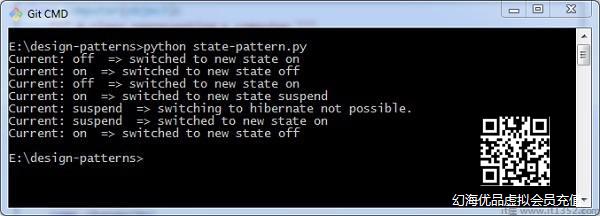它为状态机提供了一个模块,该模块使用从指定的状态机类派生的子类实现.这些方法是独立的,并导致使用装饰器声明的转换.
如何实现状态模式?
状态模式的基本实现如下所示 :
class ComputerState(object): name = "state" allowed = [] def switch(self, state): """ Switch to new state """ if state.name in self.allowed: print 'Current:',self,' => switched to new state',state.name self.__class__ = state else: print 'Current:',self,' => switching to',state.name,'not possible.' def __str__(self): return self.nameclass Off(ComputerState): name = "off" allowed = ['on']class On(ComputerState): """ State of being powered on and working """ name = "on" allowed = ['off','suspend','hibernate']class Suspend(ComputerState): """ State of being in suspended mode after switched on """ name = "suspend" allowed = ['on']class Hibernate(ComputerState): """ State of being in hibernation after powered on """ name = "hibernate" allowed = ['on']class Computer(object): """ A class representing a computer """ def __init__(self, model='HP'): self.model = model # State of the computer - default is off. self.state = Off() def change(self, state): """ Change state """ self.state.switch(state)if __name__ == "__main__": comp = Computer() comp.change(On) comp.change(Off) comp.change(On) comp.change(Suspend) comp.change(Hibernate) comp.change(On) comp.change(Off)
输出
上述程序生成以下输出 :
